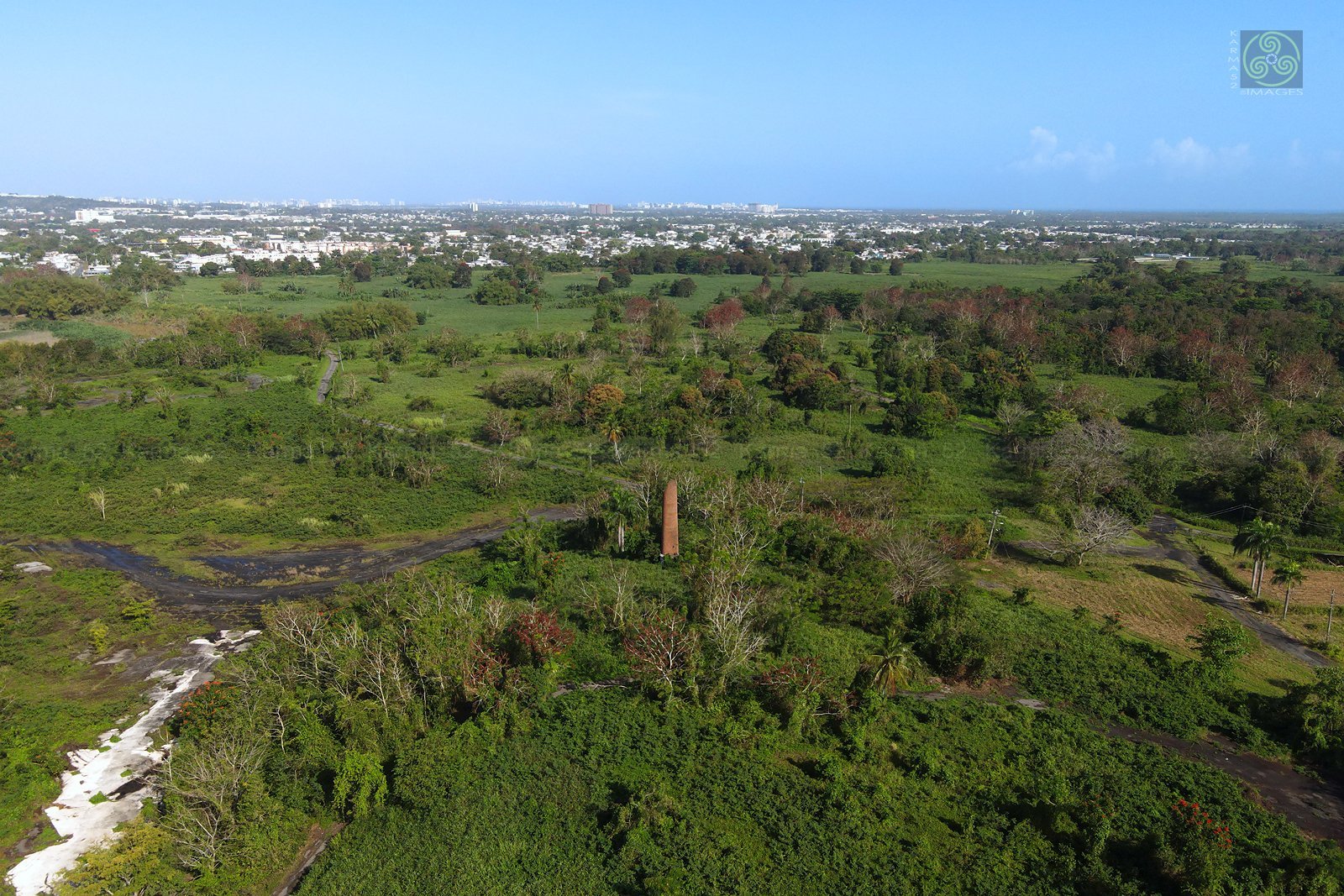
Central Buena Vista
Location: Carolina
Date Established: 1882
Date Ceased Operations: 1911
Annual Production Graph: N/A
Average Annual Production: N/A
Best Production Year: N/A
Family Ownership: Arzuaga
Corporate Ownership: Sobrinos de Ezquiaga
José Ferreras Pagán in his 1902 book Biografía de las Riquezas de Puerto Rico, states "Ignacio Arzuaga was its founder in the year .... being a muscovado sugar factory with a steam mill; in 1882 the machinery from the defunct Central Monserrate was acquired, some fourteen years ago another mill and in 1901 new buildings were constructed". He also states that it consisted on seven hundred cuerdas of its own and leased those belonging to "El Ingenio", "Santa Barbara", "Vizcarrondo", "Monserrate" and "San José" totaling altogether some 1,400 cuerdas. Ferreras Pagán also stated processed sugarcane from a number of important colonos among which were Beguiristain & Cia., Francisco Jimenez, Juan Cabezas, Ramón Rodriguez and others and that it was represented since 1899 by José Beguiristain. That it employed some seven hundred workers and produced thirty seven thousand bags of sugar annually.
The 2015 study by Norma Medina-Carrillo titled Resumen del Informe Final Fase III Proyecto de Desarrollo de Viviendas y Comercio Lorenzo Vizcarrondo , does not mention a taxpayer with last name Arzuaga in Barrio Hoyo Mulas in 1836, however, it states that in 1854 Hacienda Buena Vista was an established sugar estate the property of Juan B. Arzuaga. Juan B. Arzuaga was Juan Bautista Arzuaga Izaguirre, a Spanish immigrant from Guipúzcoa in the Basque Country. He married also Spanish immigrant from the Guipúzcoa Josefa Ignacia Beraza Goicochea of which marriage were born five children. One of the children was Pedro José Arzuaga Beraza (1864-1922) who after the death of Juan Bautista was the representative of the estate. Pedro José was adminitrator and member of the firm Sobrinos de Ezquiaga. Medina-Carrillo also states that at the time of the abolition of slavery in 1873, Ignacio Arzuaga had thirty five freed slaves working at his Hacienda Buena Vista. Ignacio Arzuaga is José Ignacio Arzuaga Izaguirre ( -1911) who was the brother of Juan Bautista. Based on the facts stated in the case Sosa et al. v. Arzuaga el al., in 1895 Ignacio returned to live in San Sebastián, Spain. His attorney in fact in Puerto Rico was Pedro José Arzuaga Beraza.
Luis Burset Flores in his essay Los Africanos Emancipados del Barco Majesty en 1859: el contrabando de esclavos frente a la prohibicion de la Trata en Puerto Rico states that in a letter from the Governor of Puerto Rico to the Overseas Division in Madrid, Governor Fernando Cotoner Chacón reported that on February 4, 1859 the vessel Majesty, en route from Africa to Cuba carrying some six hundred plus enslaved Africans ran aground at the Candelero Beach in Humacao. He states that the Carolina Municipal Government was succesful in having some of the emancipated negroes assigned to three plantation owners in Carolina; José Garcia, Nicasio Lugo-Viña Oliver and Manuel de Arzuaga of Hacienda El Vapor and that another plantation in Carolina that received emancipated slaves was Hacienda Buena Vista, whose owner Burset does not mention but states its administrator was William Lindegren. In the essay, it is stated that Hacienda El Vapor was owned by Manuel Arzuaga, a resident of San Juan, and that its administrator was William Lindegren. Therefore, it is reasonable to believe that Lindegren managed Arzuaga's Buena Vista and El Vapor plantations in Carolina while Arzuaga was a resident of the Capital City.
Based on all the above and the lack of information regarding the Arzuaga family, although no doubt there was a family relationship, it is unclear how ownership of Hacienda Buena Vista was transferred between Juan Bautista, Ignacio and Manuel Arzuaga.
The 1910 census records show Pedro Arzuaga Beraza as a sugar farmer living at Allen Street #17 in Old San Juan. The 1920 census record shows Pedro J. Arzuaga Beraza at same address, as "Bank Manager". The bank referred to here is Sobrinos de Ezquiaga, a commercial partnership established in San Juan by Spanish immigrant Jose Ignacio Ezquiaga (1775-1845), a native of Guipúzcoa in the Basque Country. Sobrinos de Ezquiaga was a limited term partnership originally established in 1821 and reestablished several times at the expiration of its term of existence, with the new partnership acquiring and continuing the legal personality of its predecesor. The court case Mendía-Morales v. Arzuaga decided on July 28, 1927 by the Supreme Court of Puerto Rico details in part the nature and shareholders of Sobrinos de Ezquiaga which included Pedro José Arzuaga Beraza and other members of the Arzuaga family.
In 1908 Central Buena Vista was acquired by the Loiza Sugar Co. who had recently acquired Central Canovanas located some 6 km away. In 1911 the Loiza Sugar Co. ceased to operate Central Buena Vista and in 1912 sold its mill and machinery consisting in part by centrifugals, crystallizers and a large Stirling boiler to Cia. Azucarera de la Carolina who installed them at Central Progreso which they had acquired in 1910 from Finlay Bros. The fiscal agent of of Cia. Azucarera de la Carolina was the mercantile firm Sobrinos de Ezquiaga whose managing partner was Pedro José Arzuaga. The officers of Cia. Azucarera de la Carolina were Pedro José Arzuaga, President and Sosthenes Behn, Secretary. Some information available also state that part of the machinery from Central Buena Vista was installed at Central Bayaney.
The pictures below of the chimney remaining of Central Buena Vista were taken by Carlos Alemán in April 2023.


